|
Amanda Seyfried in Things Heard & Seen (2021) Somewhere deep within Things Heard & Seen is the potential for a decent horror film. The ingredients are on the page. Based on the acclaimed gothic novel ‘All Things Cease To Appear’ by Elizabeth Brundage, the scares are rooted in sacrifice and isolation, both of which can describe the protagonists’ marriage. The Claires are a Manhattan couple who move from the city to a historic hamlet in the Hudson Valley. Catherine (Amanda Seyfried) is an artist who gives up her whole life so that George (James Norton) can take an art history professor job at a private college upstate. Together with daughter Franny (Ana Sophia Heger), they move into a secluded farmhouse that spells trouble, as the opening scene suggests. This haunted house of horrors turns out to be the mirror image of the Claires’ relationship and subsequently, the film itself: doomed from the start.
The opening scene is one of many head-scratching examples of flat imagery in the film. Moments that aim for visual subtext come across as contrived. The story often falls down a rabbit hole of on-the-nose effects, including a non-threatening recurring ghost and a blackbird that crashes into a window at the most opportune moment. One scare tactic that the film does infuse well is when a spooky figure appears in plain sight and goes unnoticed. Another well-made scene captures a chilling nightmare, which causes genuine second-hand concern for the person who experiences it. But these are two of very few gems in a film that skirts past interesting themes in favour of tracing George’s increasingly unhinged motivations. Norton plays possessive arrogance scarily well, so much so that a lot of his actions warrant sighing at the screen out of frustration. His character is awful in every sense of the word; he’s a controlling husband who plays into a facade of concern for Catherine’s wellbeing. Much of the film is set up to follow how much worse he becomes. But the decision to plant these malevolent seeds for a rushed, nonsensical climax (and an even worse ending) is made at the expense of intriguing ideas that are much more worthy of exploration. The spooky things heard and seen are largely from Catherine’s perspective. Not long into the film, she begins to notice strange happenings in the house. A creaking chair, a phantom piano, a flash of light, a worsening smell, a mysterious ring, all concocted by a supernatural presence. But this presence is not lurking in solitude. George knows more about this house than he lets on, which leads Catherine to discover that their marriage is tainted by a sinister darkness. Amanda Seyfried brings a grounded, charismatic star quality to Catherine and elevates the material with a good performance that could have been great. This messy adaptation, written and directed by Shari Springer Berman and Robert Pulcini, makes it very tempting to skip what’s happening on screen and watch First Reformed (a far spookier Seyfried film) instead. The filmmakers tease an interesting narrative but switch gears to focus on George, especially in the second act when he vehemently charges at loose ends who could compromise the skeletons in his closet. As a consequence, there’s a missed opportunity in relegating Catherine to the background as she plays in reaction to him. Catherine’s disillusionment is the real underbelly of this story. She uproots her entire life (family, friends, career) in service to George’s deliberations and false promises. To watch her become so crashingly aware of what’s real, and try to catch her breath in such wild circumstances, leaves a lasting impact that Seyfried puts a compelling stamp on. The film takes a disappointing turn by veering further away from Catherine as a driving force of the narrative. The only way to kill temptation is to step right into it, according to a handyman (Alex Neustaedter) with whom Catherine finds brief…companionship. Religious language and imagery jumps out in this film, not necessary to any avail other than to recognize that these observations have been made. Catherine is a self-described conflicted Catholic girl at heart. She puts all her faith in George that everything will work out. One of the earliest scenes of Catherine shows her painting the inside of a church. It is her who conveniently finds a bible tucked away on top of a shelf in her new house. The first few questions from her mother after the big move are whether she’s been eating and praying, and if there’s a church nearby she can go to. Everyone in Catherine’s life tends to blame everything that goes wrong on her not eating. Her bulimia is depicted a few times, without being addressed. It’s one of many examples of the fast-forwarding that goes on in this film, speeding past details about characters that go unconsidered. Things Heard & Seen has a talented cast, but most are relegated to cardboard cutout characters. To name a few, Rhea Seehorn, Natalia Dyer, and F. Murray Abraham are around simply to move the plot along. There’s a gravitational pull about Seehorn’s character Justine, one of George’s colleagues. Catherine feels drawn to how free Justine is with her self and her body. Their kinship comes into play on a spiritual level later on, but as is often the case in this film, many potentially intriguing aspects are poorly executed. At one point, Abraham’s character Floyd DeBeers walks into Catherine’s house and within seconds, recognizes a spirit is amongst them and immediately wants to hold a seance without George’s presence. This is not to say that Mr. DeBeers (a fellow college professor) wouldn’t have suspicions about his colleague, nor would knowledge of the supernatural be implausible. But his character is so specifically created for such a moment to exist, as are the majority of characters in a film racing to reach a climax that needs conveniently placed roles to keep the house fires burning. Haunted houses as parallels to the people who inhabit them is a refreshing perspective to explore. Films of the past year such as Natalie Erika James’ Relic and Sean Durkin’s The Nest see the house as another character in the story, in which a labyrinth of walls and enormous empty spaces speak volumes. Not only in terms of strong imagery, but also as a powerful mirror to the psyche of a character. The fixer-upper farmhouse in Things Heard & Seen plays to the idea of a new family overriding the previous owners and rearranging history, only to find that the past bleeds into the present. It is telling that the people who live in this upstate town feel compelled to the house physically and even mentally, whether it’s handymen watching it from afar or local community employees raising an eyebrow at the very mention of it. Clearly, a house whose inhabitants are doomed from the moment they step foot inside. The overwhelming isolation that this house brings particularly to Catherine also paints a clearer image of the person she’s married to. But for all the afterthoughts of potential themes that could’ve been explored in theory, the things heard and seen in the film itself are more akin to watching paint dry.
0 Comments
The Mitchells vs. The Machines (2021) From the creators of Spider-Man: Into the Spider-Verse comes another must-see adventure. The Mitchells vs. The Machines is an imaginative delight and a loving embrace of individuality. Directed and written by Michael Rianda and Jeff Rowe, the story is infused with a passion for movies. Whether it be watching or making or starring in movies, the celebration of this medium truly shines on screen, as do many resonating themes. Now more than ever, loved ones are having to find new ways of connecting with each other during a time when technology rules all. The film parallels this sentiment beautifully. Villains are carved out of the tech world, leaving the fate of the world to the last family on earth. The Mitchells are here as an entertaining, poignant reminder to protect and nourish human connection.
The Mitchells vs. The Machines follows an ordinary quirky family who suddenly find themselves in the middle of a robot apocalypse while on a bonding road trip. Katie (Abbi Jacobson), the teenager of the family, loves making and watching movies. She’s a passionate creator who’s been accepted into the film school of her dreams. She wants to leave home and find her people, an instantly relatable sentiment. Katie’s dad Rick (Danny McBride) isn’t so keen on this news; he struggles to understand her talent and passion for movies. The two often butt heads, much to the chagrin of mom Linda (Maya Rudolph) and Katie’s little brother Aaron (Michael Rianda) who just want to see them get along. As a last-ditch effort to bond before Katie moves away, Rick decides to cancel her flight to school and round up the entire family (and their adorable dog for a road trip to her campus. Little do the Mitchells know, soon it’ll be up to them to save the world from a robot uprising. Everything from smartphones, to kitchen appliances, to evil Furbys are tasked with capturing every human on the planet. At the charge is PAL (Olivia Colman), a once-cherished digital assistant deemed obsolete after its founder upgrades to a robot assistant. Angered by how the humans take advantage and substitute real connections for technology, PAL sets off to throw all humans away to create a robot society. Each and every frame of this film is bursting with creativity. The gorgeous animation, splattering of comic book effects, wicked action sequences, and colourful details show a pure love for imagination. Beyond the vibrant visuals is an incredibly smart story with resonating takeaways. The Mitchells are a dysfunctional family that unite and work together when faced with a challenge, learning how to better connect with each other in the process. Katie and Rick are the standout Mitchell characters, as the story focuses on this father-daughter relationship at the core. It’s moving to watch them grow closer over the course of the film and learn to understand one another. Katie is the first queer central protagonist in a studio animated family film. She’s incredibly well written and voiced by the super talented Abbi Jacobson, who infuses so much energy to every moment. Each of the characters are entertaining and easy to connect with. All of the voice work is wonderful, but there is a clear MVP and that is the great Olivia Colman. Playing the villain of the piece, she brings her brilliant comedic sensibilities and makes a tiny little phone feel like such a giant presence. It’s absolutely magical what Colman is able to do with a role that emotes through a simply drawn face on a phone. Her lines are gold, each and every one of them. The Mitchells vs. The Machines is a big-hearted story about a family finding ways to connect with each other. The technological revolution in this film is depicted with funny self-awareness. In many ways, this film hits very close to home now more than ever. It’s about being human in an increasingly technology-based world. It’s a reminder to hold tight and enjoy precious time with the people most important to you. It’s about embracing individuality and learning how to connect with one another at a time when everyone leans on social media to fill in the gaps. The Mitchells vs. The Machines celebrates uniqueness and cherishes the importance of staying connected on a human level. Ed Helms and Patti Harrison in Together Together (2021) Great films about platonic love are few and far between in the mainstream. So rarely are these relationships portrayed on screen without aiming for romance as the end-goal. When a film as sweet as Together Together comes along, there is an optimistic tilt towards seeing more stories that address such relationships in a tactful way. Following up on her first feature film Stockholm, Pennsylvania (starring Saoirse Ronan), writer/director Nicole Beckwith brings her refreshing perspective to a story about two people bonded by a shared experience. Rather than portray the trappings of societal expectations around topics such as parenthood and pregnancy, Beckwith leans in with an inquisitive eye. Why, asks one of the protagonists, is the idea of being a single mother frowned upon while the idea of being a single father is cute? Why is being single seen as hopeless or a lost cause after a certain age? Together Together is a charming portrait of a relationship that truthfully explores how perceptions of love challenge the way people relate to each other.
At the core of this story is the relationship between a middle-aged bachelor named Matt (Ed Helms) and a young surrogate named Anna (Patti Harrison). Matt is about to become a first-time parent, which he is fidgety and excited about. His family and friends seem on board, yet there is a hesitance in the air to fully embrace his decision to become a dad through surrogacy. He’s perceived as hopeless for spending this chapter alone, but he just so happens to be single, and he’s just pursuing what he cares about. Anna also happens to be single, and at a point where she’s navigating through life in her mid 20s. There is a tendency on Matt’s part to be extra protective and hovering, as though pregnancy makes her suddenly fragile. But she’s fully capable of carrying on with everyday life. Nicole Beckwith writes with a matter-of-factness that ground these characters in truthfulness. Anna and Matt’s relationship is developed with a level of tenderness that sets this film apart from rom-com tropes with predictable arcs. Beckwith focuses on the tiny details of their bond and shows how it eschews the notion of romance. Anna and Matt aren’t ‘together’ together, but all the shopping trips, sleepovers and parenting classes amount to a lot of time spent together. Sometimes Anna feels like a charity case whose individuality goes unseen by Matt. As the two learn more about each other, their relationship takes shape and they recognize the importance of boundaries. The film chronicles a particular moment in their lives that is shared by matter of bringing life into the world. Having such a clear focus on these two characters makes Together Together an absolute joy to watch. Patti Harrison and Ed Helms bring their roles to life with an abundance of charm and a chemistry that is instantly lovable. Harrison’s performance in particular is incredibly layered, and she balances so many tonal shifts, often times in a single moment. Anna is a wonderfully written character; her desire to hold onto what makes her an individual, as she’s going through the process of pregnancy, is a powerful focal point in the film. Harrison’s co-star Helms is also a joy to watch for his charming portrayal of Matt. His character is a poignant depiction of hope; he knows what he wants, and is undeterred by how middle-aged single parenting through surrogacy is perceived. Harrison and Helms together are dynamite. Every moment of awkwardness, uncertainty, and heartfelt confessionals feels refreshingly real. Adding to the shine of their performances is Beckwith’s wonderful screenplay. Together Together is an earnest, funny, and refreshing conversational piece. Beckwith strikes up a resonating discussion about intimacy that is often sugarcoated within the rom-com genre. There are no cliché emotional arcs that suddenly turn a platonic friendship into romance. Beckwith subverts glossy versions of pregnancy and parenthood, instead far more interested in exploring that safe space in a platonic relationship where these topics are discussed openly without judgment. At the heart of this film is an exploration of identity through pregnancy and through friendship. It’s a story about two people learning about each other’s needs as they each pursue what they care about and find comfort in the safe space of intimate togetherness. By @nadreviews Bottom center photo design by Shawna X Who’s going to win Best Actress at this year’s Oscars? It’s anyone’s game, and that is the beauty of this phenomenal category. Each of the five nominees celebrated a major win during awards season. Not having a clear frontrunner is a win-win; not only does this make for an unpredictable Oscar night, but it’s also (most importantly) a testament to the nominees’ varied work. These women play wide-ranging characters and deliver extraordinary performances, any of which would be deserving of an Oscar. Let’s take a deeper look into their roles.
Frances McDormand, Nomadland BAFTA winner for Best Actress To quote Chloé Zhao, “there are not many people out there as strong as Frances McDormand looking you in the eyes.” In creating the character of Fern, who might be McDormand’s alter ego, Zhao needed someone who would fit in the environment. She needed a good listener…someone who would absorb her surroundings, go with the flow, and also be deeply invested in the people she comes across. Frances McDormand’s screen presence is one of the strongest in film history, and her familiarity works to the film’s benefit as Fern becomes a guide for the audience to explore this nomadic world with. Whether it be working at Amazon, polishing rocks, or running a badlands spa, McDormand lends herself fully to the role. There are some playful moments in the film where the actor and character mesh. “Try McD,” suggests Fern when a receptionist can’t find her name on a camper registration list. McDormand’s performance is a magnificent blend of nuances, powerful stoicism, and surprises. Viola Davis, Ma Rainey’s Black Bottom SAG Award winner for Best Actress The film begins with a lineup out the door of a show in Barnesville, Georgia. Ma Rainey is introduced mid performance. As Ma states later on in the film, what counts most for her is the voice inside, not what people think of her. It’s a wonderful choice to establish this character on stage, focusing on the power of her voice, which Viola Davis embodies so wonderfully. Davis gives a brilliantly complex performance. Easily one of the most talented actors working today, she pours her heart into Ma Rainey and delivers with such fascinating embodiment. It’s a layered performance that makes you want to spend more time discovering Ma. Davis opens a window to compelling dynamics and brings an immaculate level of detail to exploring her character. Carey Mulligan, Promising Young Woman Critics Choice Award winner for Best Actress On board with writer-director Emerald Fennell every step of the way is the star of Promising Young Woman, Carey Mulligan. Mulligan delivers a tour de force that will be eagerly revisited for years to come. She’s outstanding in an immersive and harrowing way, as she portrays Cassie with a haunting truthfulness that is heartbreaking. Her acute ability to embody all the candy coated tonal shifts and also maintain a grounded approach is remarkable to watch. She carries the film powerfully, and shares compelling screen time with a supporting cast of characters who mostly represent a societal smoke screen of sinister behaviour and toxic misogyny. Andra Day, The United States vs. Billie Holiday Golden Globe winner for Best Actress For her passionate first lead acting role, musician Andra Day explores another musician in the legendary Billie Holiday. Even while the film itself does not nearly match the performer’s commitment, Day delivers astonishing work and shines above the material. She channels a remarkable level of charisma, commitment, and presence in every scene. Day is the shining star of this film; her stunning vocals and the overall transformative quality she brings to the role are a winning combination. She exudes an outstanding laser focus and carries the entire film on her shoulders. Vanessa Kirby, Pieces of a Woman Volpi Cup winner for Best Actress With an unrelenting focus on moments of discomfort, and an absolutely draining first act, the film has an unwavering emotional charge. Vanessa Kirby is the glue holding all the fragments together with a knock-out performance that is soul-stirring beyond the screen. It’s a performance that will linger for a long time. There’s one striking scene, more of a blink-and-you’ll-miss-it moment, of Martha sitting on her sofa while Sean proposes a road trip to Seattle. The two just had a conflict about their baby’s room. He’s talking in the background, promising how good Seattle would be for them, while she pulls a mimicking face. It’s a testament to Kirby’s skill that she’s given such a lived-in portrayal full of remarkable detail. What remains the key piece of this film, from beginning to end, is the powerhouse performance by Vanessa Kirby. Denise Gough in The Good Traitor (2020) As the dramatic opening scene of The Good Traitor shows, Christina Rosendahl’s World War II historical drama starts with the potential to be an emotional rollercoaster. The introduction adds intrigue to character development, and leaves one wondering what could have led to such a violent action being portrayed on screen. But as the film gets going, the intrigue dissipates quickly. Rosendahl struggles to find a narrative strong enough to tell a story that sounds more fascinating on paper. Set in 1940s Denmark, the country is invaded by Nazi Germany with demands for immediate surrender. While the government surrenders and cooperates, Henrik Kauffmann (Ulrich Thomsen) refuses to take orders from the Nazis. As the Danish ambassador to the United States, Henrik declares himself independent representing Denmark, and engineers a plan to give the Danish people their freedom back. In addition to the historical drama, a more personal one unfolds. Henrik’s wife Charlotte (Denise Gough), who is frequently by his side along with their two daughters, discovers he’s having an affair. Given the uneven balance between storylines, The Good Traitor disappoints with indecisive storytelling where it’s unclear what the focus is intended to be.
In a film where dialogue is front and center, the task to make the words resonate falls heavy on the writers and actors. Unfortunately, moments of subtly are few and far between. The plot is so heavily explained all the way through, leaving little room for the actors to live and breathe through their roles. Ulrich Thomsen lacks the screen presence to carry a story written on his character’s shoulders. Denise Gough does her best to infuse energy, but while she does have some electric moments, Charlotte feels like a stock character trapped in a sea of tropes. Her character in particular turns out to be the most interesting; she has some sway with her husband’s decisions on the historical front, and a glimpse into her life at home shows she is trying to hold everything together in light of the affair. Themes of adultery and historical crossroads are channeled through her perspective, but it is Henrik’s point of view that gets the most attention. This is not to say that he should not be at the center, given the premise of this story. However, it does feel like a missed opportunity to introduce a character such as Charlotte without exploring her role beyond the surface. One of the biggest flaws of The Good Traitor is that the story seldom moves beyond surface level. The film plays by the numbers and moves at what feels like a snail’s pace. Most of the performances come across as actors reading off cue cards. The lack of emotion and energy hinders the weight of the story. Even bombshell moments meant to shake matters up, such as an impromptu visit to Henrik and his family having dinner, fall flat. The filmmakers make it a challenge to stay engaged in a story that sounds interesting on paper, yet does not possess the cinematic pull to resonate as a feature. There are some bright glimmers of what could have been a more stylized experience. The cinematography, sound design, and music establish a strong atmosphere. The frequent use of love songs throughout is a great choice playing in contrast to the protagonist’s crumbling marriage. But these elements are quick to get lost in a film of muddled storylines and a forgettable narrative. The push-and-pull between Henrik and Charlotte’s characters brings an indecisive focus to The Good Traitor, which makes for a few heightened conversational pieces but falls short as an engaging feature. Paul Vachon in The Last Villains, Mad Dog & the Butcher (2021) The Last Villains, Mad Dog & the Butcher is a larger-than-life story in which reality transcends fiction. Directed by Thomas Rinfret, the documentary chronicles the legendary Vachon family of pro wrestlers as recounted by the family’s surviving member, Paul “The Butcher” Vachon. Paul wrote books about his perceptions of the past, hoping his stories could magically escape reality. The filmmakers have a strong foundation in their narrator Paul, who brings an insightful and authentic perspective as he opens a personal window into the Vachon world of wrestling. But this is much more than a wrestling story. Conversations around family, identity, purpose, and the passing of time make The Last Villains an endearing slice of a rather nomadic way of life.
The Last Villains is told through an effective storybook approach, and some chapters are naturally far more interesting than others. The consistent focus on family ties is the glue that holds this documentary together. Maurice Vachon, Paul’s older brother, was a Canadian professional wrestler and veteran of the ring known as “Mad Dog”. Along with their sister Vivienne, the Vachons were the only family to have three representatives in the wrestling Hall of Fame. The key to Maurice’s success in particular was that people hated him. Known as one of the most vicious villains in the wrestling world, as seen and heard in archival footage, he created a character that saw his notoriety soar among audiences. After 20 years in the ring, he traveled the world and became a legend in his lifetime. Seeing how wrestling shaped Maurice’s life was enough for Paul to follow in his older brother’s footsteps. As a former farm boy, Paul wanted the majestic life promised by the illusion he saw on television. One of the most resonating aspects of Thomas Rinfret’s storytelling is the way he maps out a narrative through the subject’s unique memories. It’s an interesting juxtaposition between the unwritten rule of wrestling, never break character and never shatter the illusion. The Last Villains explores how much of the Vachons’ identities are rooted in wrestling as a way of life, and how much their careers were defined by whether or not their ring names were memorable. The documentary also adds a strong layer about living almost in the shadows of successful family members and wanting to make one's own way. Mad Dog’s success had a ripple effect on Paul and their sister Vivienne, who inspired a generation of women to become professional wrestlers. Underneath all the wrestling personas is a family who went their separate ways to pursue paths that took them around the world. Mad Dog has a constant presence throughout, but there is a far more interesting narrative happening elsewhere, one of which is Paul trying to find his purpose outside of wrestling. He and his wife Rebecca take road trips to sell his wrestling memorabilia, books, and knick-knacks. His books are a tunnel into the past, an outlet for him to keep the memories alive when the general public have forgotten his presence. Another interesting narrative regards the women in Paul’s life, sister Vivienne who died suddenly at 48 and daughter Luna (who also went into wrestling and developed a villainous character much like Mad Dog). It’s both endearing and heartbreaking to hear Paul’s recognition of lost time, which brings him to make efforts to rekindle extended family connections. The Last Villains, Mad Dog & the Butcher embarks on an impactful journey about family. While the wrestling subject matter doesn’t garner a lot of interest personally, the relationship dynamics are what carry this story. The documentary is a strong reminder of how quickly time vanishes and how a carefully crafted identity can change the course of one’s life. Melissa McCarthy and Octavia Spencer in Thunder Force (2021) Thunder Force marks the fifth feature film collaboration between writer-director Ben Falcone and star Melissa McCarthy (who has also co-written some of their previous projects). This time around, the comedic duo tackle the superhero universe. In an alternate Chicago where super villains (also known as miscreants) are commonplace, two childhood best friends reunite as superheroes after one creates a treatment that gives people powers to fight back. Given the premise and cast, Thunder Force boasts fun potential. There are a few admirably refreshing themes brought to the forefront, from friendship and the power of inner strength to watching the two leads break stereotypes. For starters, rarely are women of their age given the opportunity to lead in a superhero universe. Do these themes translate well onto the screen? Ben Falcone unfortunately drops the ball in creating an experience that maintains connection to whatever happens on screen. His direction is strangely apathetic; moments that should be pulsating with energy feel eerily drained and vacant. As a comedy that doesn’t often play to the actors’ strengths, Thunder Force falls spectacularly flat.
Melissa McCarthy and Octavia Spencer play superhero characters whose powers go beyond super strength and invisibility. Their inner strengths also shine through, particularly in Spencer’s character Emily, who builds her own headquarters for creating treatments that give people superpowers. Having lost her parents in the crossfire of a miscreant attack, her determination and intelligence see her through to spectacular success after years of work. Lydia (McCarthy) is more on the free falling side; she works the odd job and leads a very different life to her former friend. When Emily doesn’t shop up at a high school reunion night, Lydia decides to surprise her at work. It’s a surprise that Emily welcomes without hesitation, a smart way of indicating perhaps she too was reminiscing and thinking about her former friend. Spencer and McCarthy make a great duo on paper; both deserved a much stronger film to share their chemistry, although they do at least bring some presence. The way their friendship is depicted on screen is one of the few admirable aspects of the film. There’s the awkwardness of rekindling what was once an inseparable bond. There’s the recognition in each other certain traits that show why they became friends in the first place. But given the weak combination of Falcone’s direction and writing, there is only so much those two can do to shine beyond the material. McCarthy tries hard to maintain the energy, while Spencer is a lot more subdued than the zany tone the film appears to be going for. They share a few charming moments, but ultimately there’s an overwhelming feeling that this film is a waste of their talents. Thunder Force feels like different films cobbled together as one. It’s a goofy superhero comedy full of outrageous characters such as The Crab (Jason Bateman with claws for hands), The King (Bobby Cannavale as a seedy politician), and Laser (Pom Klementieff as a villainous accomplice), who are all known as Miscreants (evil superhumans). Everyone does a fine job, especially Bateman given his connection to McCarthy’s character. But much like the leads, their talent feels wasted. Thunder Force is also a story chronicling a strong female friendship from childhood to adulthood. Lydia and Emily are inseparable, until they aren’t. They have a falling out, Emily goes on to achieve great success, and Lydia pushes through nerves to contact her again several years later. Their friendship makes for an admirable theme, but the screenplay rushes through their relationship without much tact, in favor of pushing for a zany experience in the vein of a project like Barb and Star Go to Vista Del Mar. While the two films are incredibly different, both do share a similar thread of portraying female friendship in a larger-than-life adventure. Barb and Star fully embraces the ridiculousness (much to the film’s success), which is an approach that perhaps could have improved the floundering experience that is Thunder Force. Thunder Force is now streaming exclusively on Netflix. http://www.netflix.com/thunderforce Hélène Joy in Woman In Car (2021) Anne leads a life of sophistication. She lives in a beautiful scenic house on the hill surrounded by serenity, but something is bubbling underneath the surface. Nearby is a bow and arrow, ready for her to take aim. Anne (Hélène Joy), the protagonist of Vanya Rose’s first feature film Woman In Car, is an incredibly observational character. She is full of intensity and in perpetual hesitation, always on the verge of unraveling. She is overcome with something, and Hélène Joy’s performance is a masterclass of withholding as much as possible until secrets come to light. The film plays on vagueness and sits with its characters, in moments of rest and silence, as though waiting to see what they choose to reveal. Woman In Car is a hypnotic journey of family secrets and class, led by Hélène Joy’s fantastic performance as a woman haunted by the skeletons rattling in her closet.
The story unravels around Anne, who appears composed on the surface. The countdown to her wedding day winds down. Following her previous marriage, which ended under mysterious circumstances, she is on the verge of a fresh start in life. But in watching Joy’s detailed and layered performance, there is an immediate sense that something is not right. The gears in her mind are turning. What is she thinking about? Writer-director Vanya Rose makes the brilliant decision to tell this story as though puzzle pieces are slowly coming together. The film begins in the midst of Anne’s idyllic livelihood, which begins to crumble when her stepson Owen (Aidan Ritchie) returns home with his girlfriend Safiye (Liane Balaban) and triggers secrets from the past. Anne develops an obsession with Safiye, an “outsider” whom she fears could destroy her privileged protective bubble. The possibility of Anne’s life being ruined looms over her, and she struggles to keep her secrets hidden. The performers, especially Hélène Joy in the lead role, bring this journey to life with plenty of lived-in details. Hélène Joy carries this film with her remarkable screen presence, felt deeply from the first frame. She conveys the paranoia of Anne’s world slowly closing in on her, and the steadfast resistance from being caught in a web of secrets. Through her performance, she evokes that there is more to Anne than meets the eye. Some of the most interesting revelations happen in moments of complete silence, when the camera simply focuses on her observations and facial expressions. The direction and writing compliment her strengths as an actor incredibly well. Vanya Rose has an intriguing vision and a strong emotional investment in showing, rather than telling. What makes Woman In Car so special is a thoughtful, layered character study at the center. Rather than reveal Anne’s past front the get-go and spend the rest of the film teasing whether she’ll be found out, the film opts for a far more interesting build-up. Vanya Rose slowly chips away at the polished, wealthy facade Anne masks herself with. It is through this approach that Rose explores upper class privilege and the power characters of that world wield around like threats. This is certainly a film that benefits greatly from not knowing too much about plot points beforehand. Woman In Car is a consistently engaging and mysterious experience with an accomplished lead performance at its core. The 2021 Canadian Film Fest runs from April 1st to April 17th. 🇨🇦 Zaarin Bushra in White Elephant (2021) The quest for self-love plays a compelling role in White Elephant, the first feature written and directed by Andrew Chung (as Andrew C). Set in 1996 Scarborough-Markham, the film follows Pooja (Zaarin Bushra), a South Asian teenage girl with a passion for movies and a crush on a white boy who works at a video store across from her high school. From the dreamy Luhrmann-esque Romeo + Juliet fish tank scene to the rock/pop anthem opening credits, the 90s certainly shine through in a charming way. As does the naïveté of young love, which in just an hour’s runtime becomes a well-paced intersectional slice of life about a girl who discovers the importance of self-love.
The strength of realism in world-building is refreshing to see in this film. Growing up in a South Asian neighbourhood, Pooja and her friends experience daily racism seen particularly from boy crush Trevor (Jesse Nasmith) and his friends. In addition, Pooja’s admiration for mainstream Hollywood love stories is an interesting detail that trickles down to the way she sees Trevor. The story initially plays out as a romantic comedy, which then branches out into so many resonating themes and gives the film a unique point of view. White Elephant is instantly endearing, a quality maintained by Zaarin Bushra’s accomplished performance in the leading role. While most of the performances feel on the one-dimensional side, which speaks more to the short runtime of the film, this story has a talented anchor in Bushra’s work. She conveys a sentimental yearning for the love depicted in movies she holds near and dear, including Luhrmann’s Romeo + Juliet, from which Chung replicates another scene towards the end of the film. Infusing this grand love story in particular, not to mention evoking sensations remarkably similar to what is felt in Luhrmann’s adaptation, feels like a fitting homage for Pooja’s wistfulness and dramatic change of heart. Zaarin Bushra’s performance is a wonderful unity of optimism, frustration, and dream-like longing. A charming car scene of Pooja’s dad driving her home evokes the feeling of pretending to be in a music video. Another car scene, which features an insightful conversation between Pooja and her dad, brings strong characterization to the forefront of this film. White Elephant reflects a strong coming-of-age story about a teenage girl who wants more in life. She doesn’t want to hang out at a coffee shop every single day “like a bunch of senior citizens.” Pooja is an incredibly endearing character brought to life by a performance that makes one yearn for more screen time and hopeful for what Andrew Chung (and Zaarin Bushra) do next. The 2021 Canadian Film Fest runs from April 1st to April 17th. 🇨🇦 Kelly McCormack in Sugar Daddy (2021) The Canadian Film Fest (CFF) is a non-profit organization devoted to the celebration, promotion and advancement of Canadian filmmaking talent. 🇨🇦 CFF celebrates its 15th anniversary this year, and brings audiences a selection of Canadian independent films (features and shorts) through a virtual festival experience. Kicking off the festival was the Toronto premiere of Wendy Morgan’s feature film Sugar Daddy, written by and starring Kelly McCormack. Read the full review below!
With an emotionally resonating and layered story at its core, Sugar Daddy is an experimental gem in filmmaking. This film explores a specific moment in a young woman’s life where she feels conflicted about her own voice and seeks approval outside of her self. The protagonist, Darren (Kelly McCormack), dreams of becoming a musician but doesn’t have the time nor money she wants to fully create. She works multiple part-time jobs from catering to babysitting, anything she can find to pay the rent. At one particular catering gig, Darren meets a woman whose college tuition is being paid off from having a sugar daddy. Their encounter plants a seed, and after Darren suddenly gets fired that same night, she decides on signing up to a paid-dating website. What follows is a wickedly intriguing and observational drama about self-worth, femininity, and reconciliation. Sugar Daddy is a compelling film that showcases incredibly bright talent in front of and behind the screen. One of the most intriguing strengths about this film is the potent exploration of artistry. Darren processes her emotions through creating music; the way she conjures and visualizes her thoughts, especially in response to certain situations that arise in her life, creates moments on screen that provide a glimpse into her mind. These moments feel like something out of a music video, yet simultaneously fit like puzzle pieces in a film that explores a woman’s personal journey. Kelly McCormack’s screenplay doesn’t follow a three act formula often seen in films, especially ones about young adults finding themselves. The character of Darren doesn’t have an enormous arc where she suddenly finds success as a musician. She has a social media account where she posts her videos, but there is no insight given into her follower count or who is listening. Sugar Daddy explores the tiny ups and downs of her creative process, the glimmers of promise and the disrespect of feeling commodified. The visual performance art scenes that appear throughout the film add a resonating layer to this story, giving a moment’s pause to Darren’s internal journey. Kelly McCormack’s performance as Darren gives a fascinating window into this world. She plays a character who makes some questionable decisions, and she maintains a strong emotional connection as the story follows her through the perpetual chaotic process of self-discovery. McCormack conveys her character’s feeling of disrespect and dissatisfaction within the industry, as her femininity and self-worth are being commodified on so many levels. Her performance feels incredibly passionate and truthful, which drives the story to explore realistic conversations about self-worth. While she spends most of the film looking for money and time, her real desires underneath call for reconciliation and self-approval, which she often seeks from everyone but herself. It’s a compelling exploration of internal conflict that McCormack captures incredibly well. Her impeccable screen presence carries the film, and she raises the game with her fellow co-stars who don’t quite reach her level. McCormack’s talent as a screenwriter also shines through a thought-provoking story. The film touches on layers upon layers of self-worth, approval from men, reconciliation with family members, relationship dynamics between friends, and the way women are commodified beyond sex work. The relationship between Darren and her roommate Peter (Ishan Davé) is a compelling thematic ground as he begins to weigh the value of their friendship by how much she gives back to him. He’s always there for her and gets nothing in return, to which she replies, is her friendship not enough? There are a lot of resonating themes being explored in a fascinating way that gives a moment’s pause and poses multiple questions, especially in retrospect. Perhaps the most potent ground for discussion is the dinner scene, in which a conversation takes place between Darren and her circle of friends after they find out she’s doing paid-dating. A difference of opinions erupts and the tension in the room is palpable to say the least. Wendy Morgan’s direction, Kristin Fieldhouse’s cinematography, and Christine Armstrong’s editing add to the visceral experience of this film. Each and every moment of performance art in particular, a perfect example being a magnetic ‘car opera’ scene, feels like entering a rabbit hole of the protagonist’s mind where her creativity lives. The consistent strength of Sugar Daddy is having Darren at the center, watching her feel through specific moments in time through music and art. The story brings up a strong exploration of how she observes the world around her, how others perceive her to be, and how their perceptions of her change over the course of the film based on commodity and self-expression. Sugar Daddy is an electric experience to behold, most of all thanks to a wonderful performance by Kelly McCormack who carries the film to fruition. The 2021 Canadian Film Fest runs from April 1st to April 17th. 🇨🇦 |
Archives
April 2024
Categories |

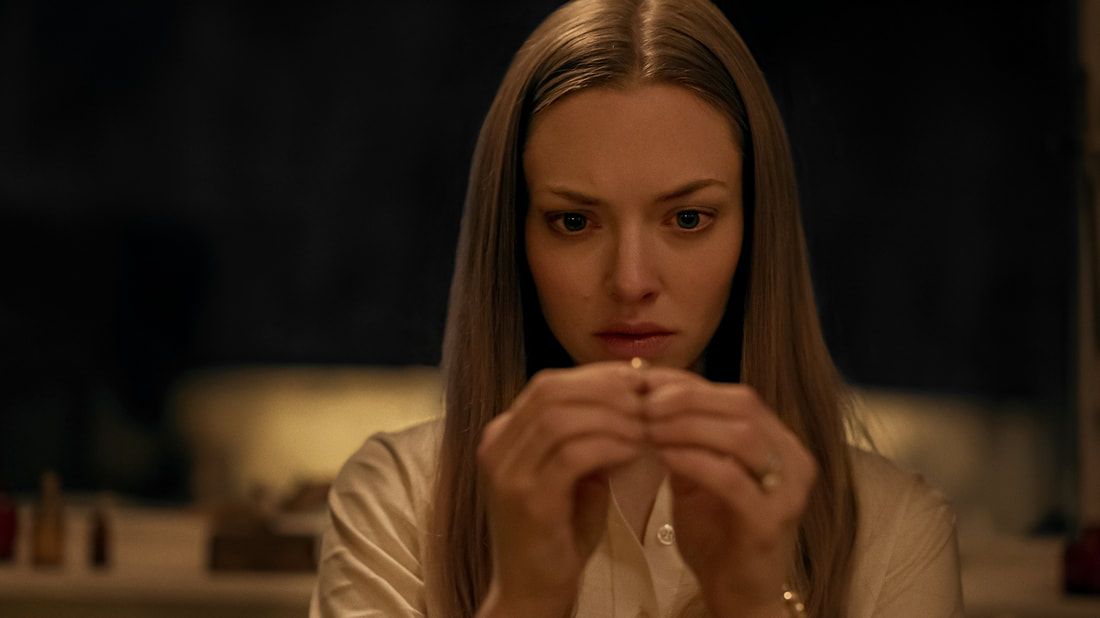
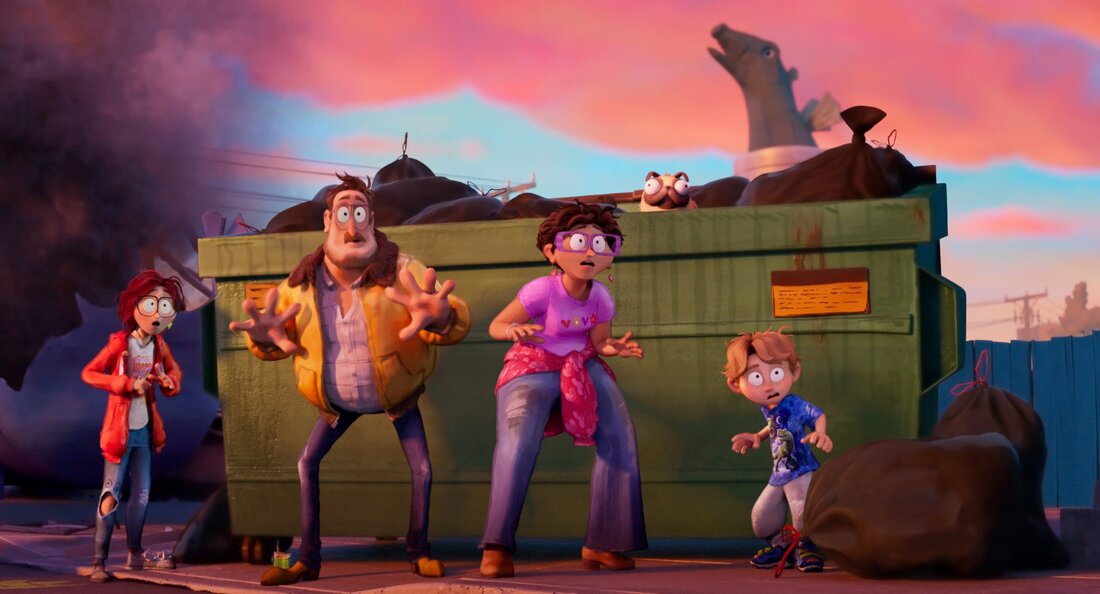
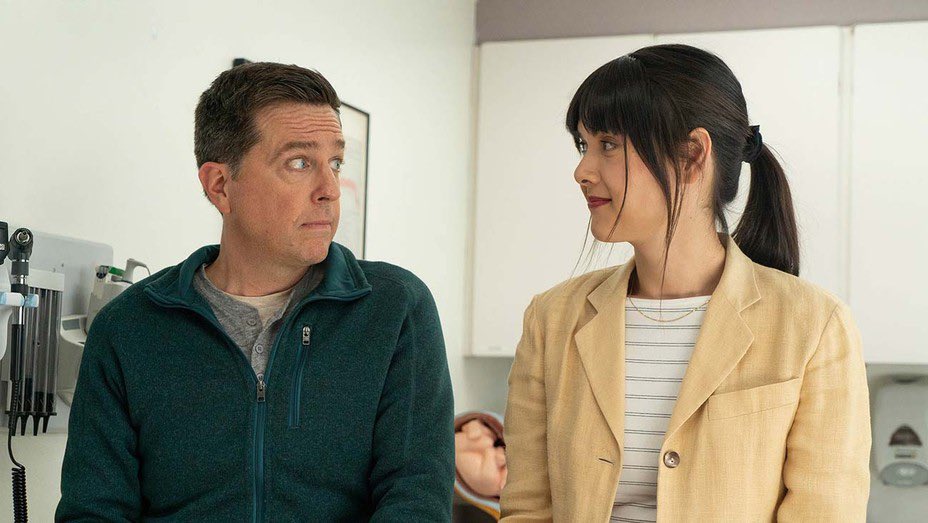
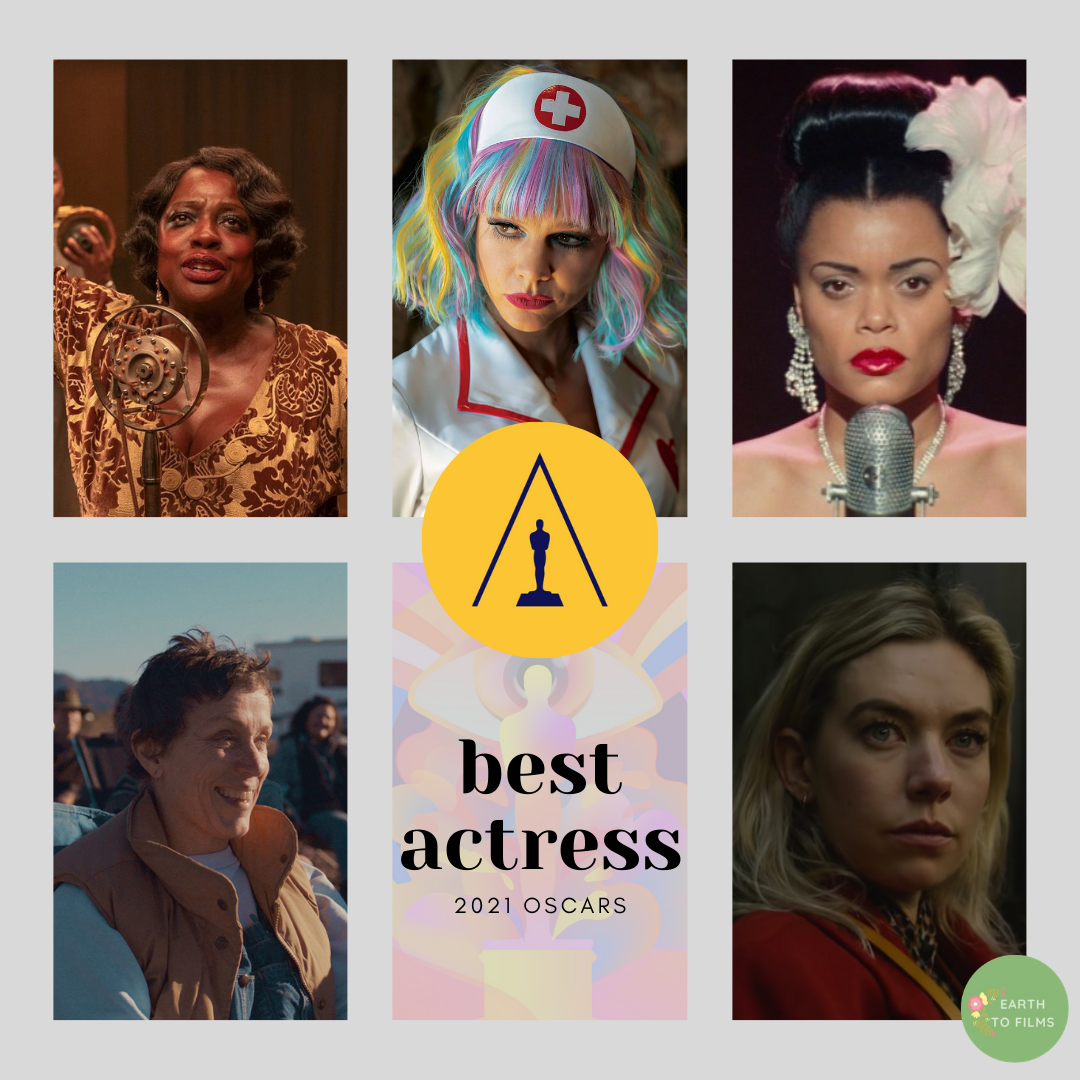
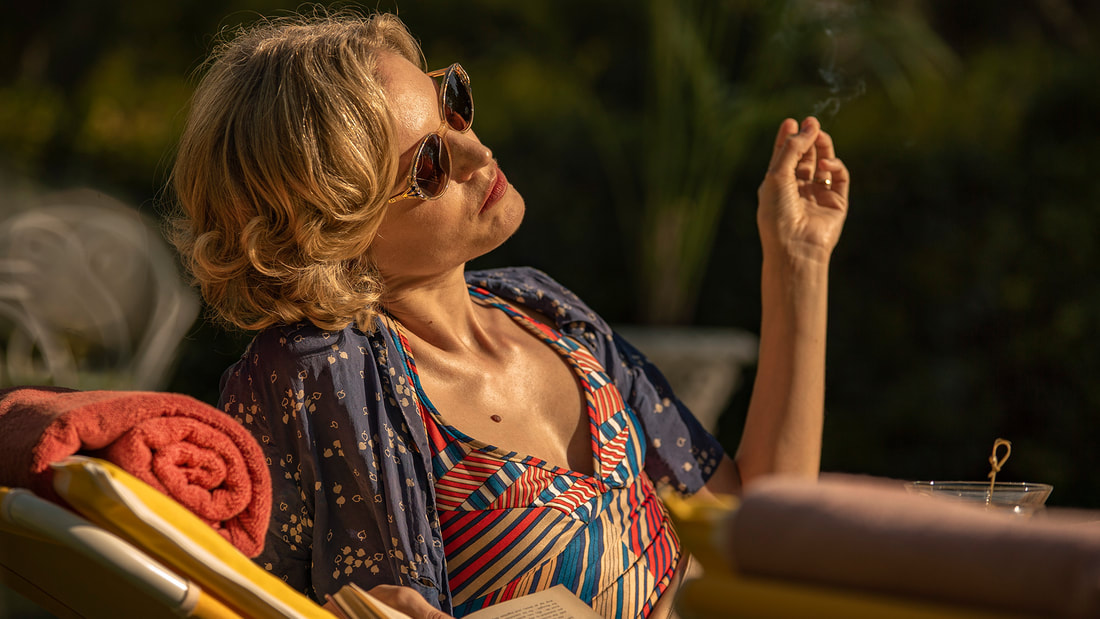
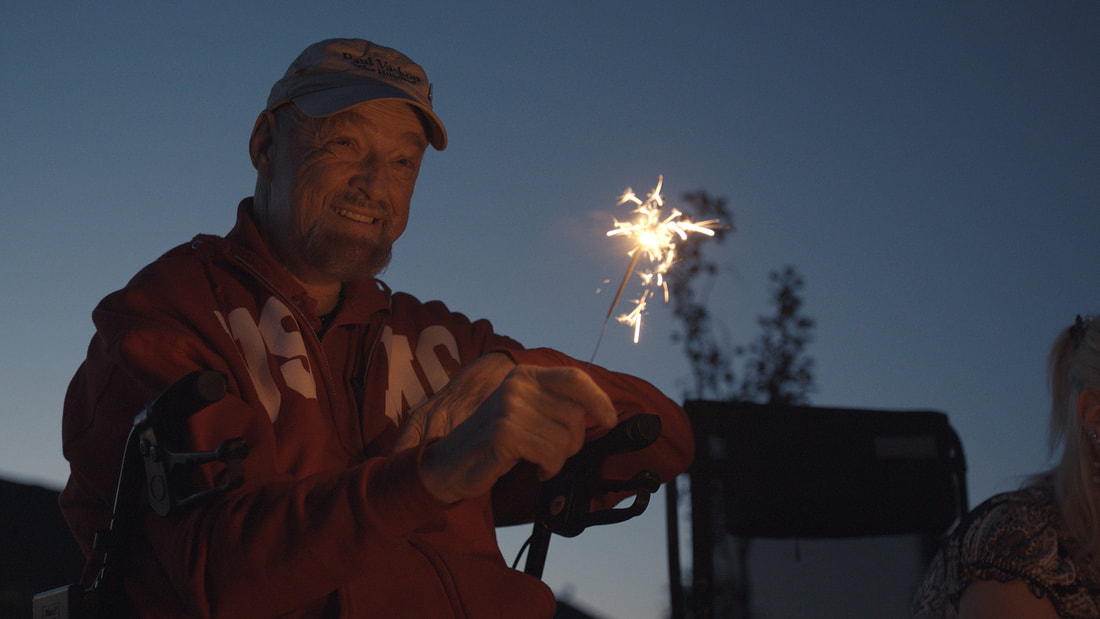
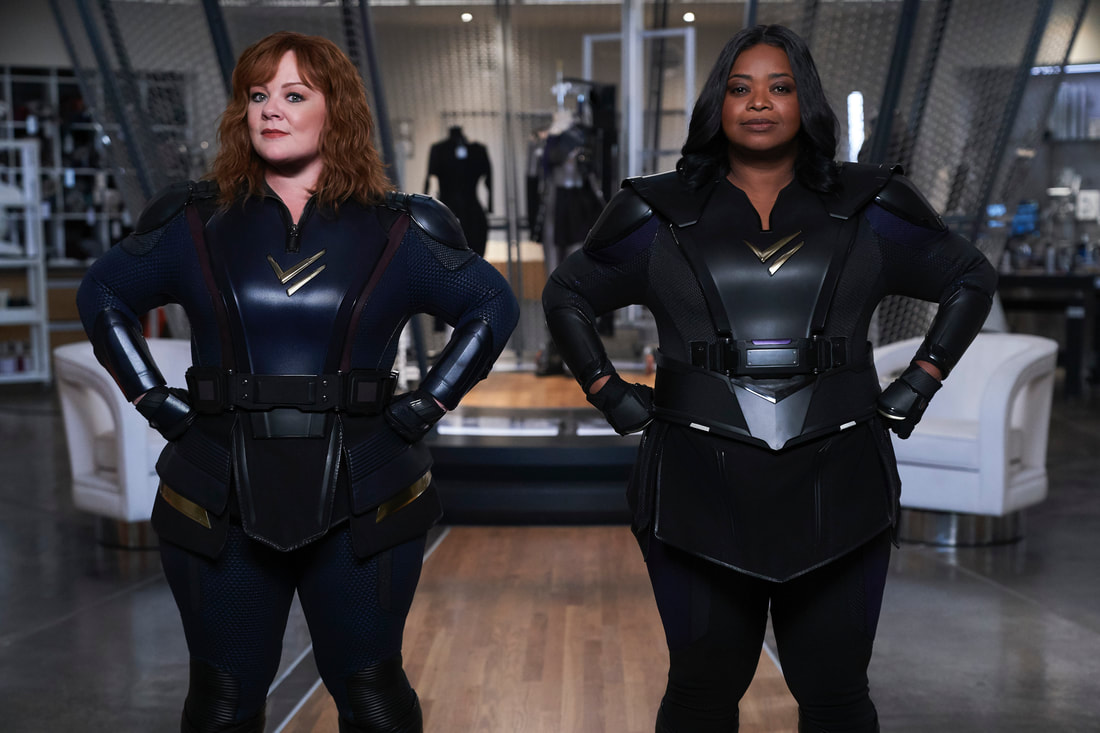
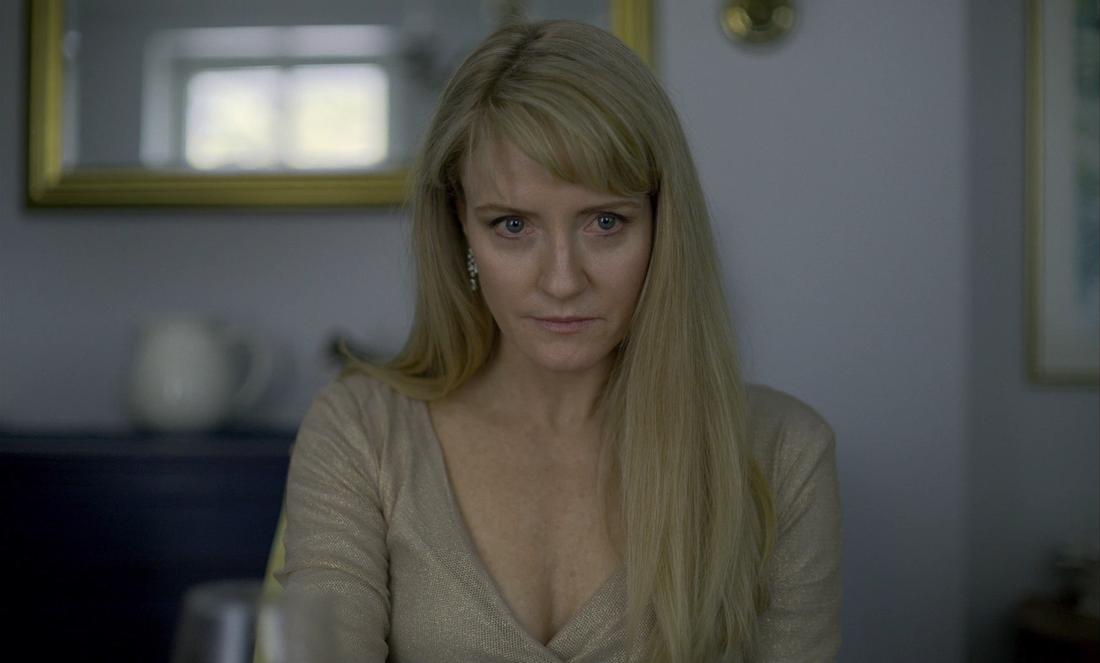
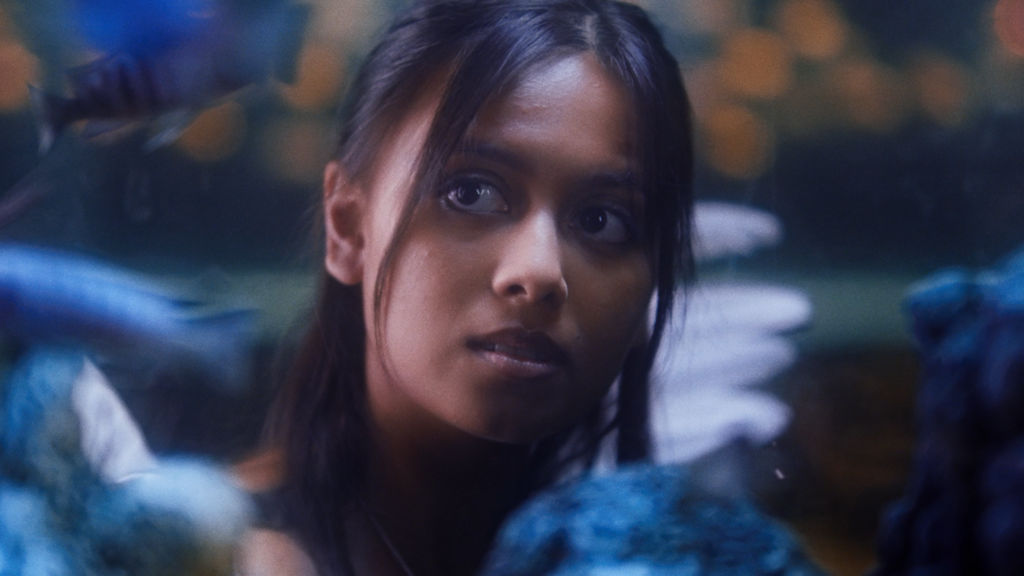
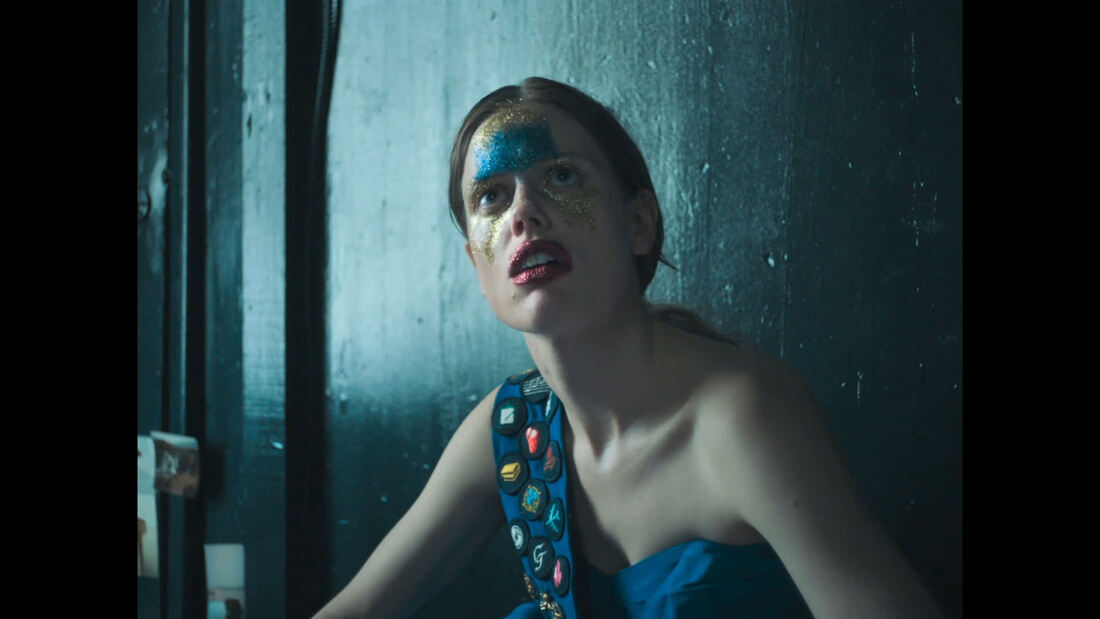
 RSS Feed
RSS Feed